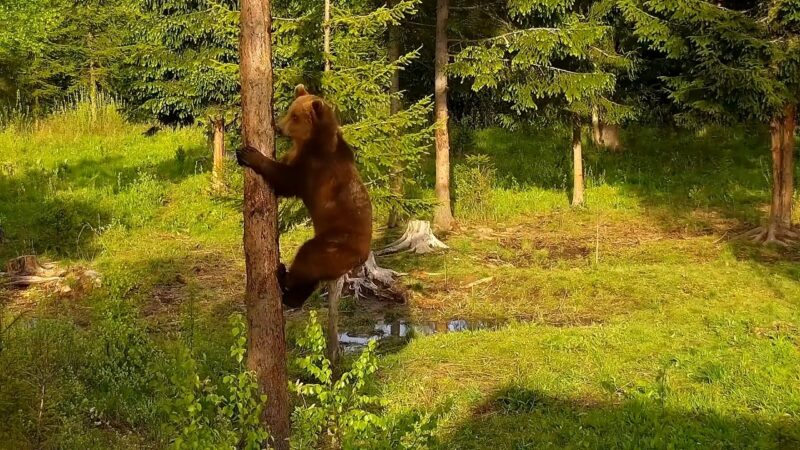As a zoologist, I often find myself addressing the question, “Can bears climb trees?” This inquiry paves the way for our comprehensive investigation into the fascinating realm of these majestic beings.
In this detailed study, we will uncover the enthralling tree-climbing behaviors demonstrated by various members of the Ursidae family, the scientific term for bears. We aim to comprehend the motivations behind these behaviors and their indispensable role in the survival of these species.
Presented in a compelling and easy-to-understand style, this research caters to a broad spectrum of readers. Whether you’re a fervent nature enthusiast, a fellow wildlife researcher, or simply an inquisitive soul, I cordially invite you to join me on this enlightening journey into the world of bears, from the forest floor to the treetop.
Let’s embark on this thrilling discovery together!
How Do They Climb Trees?
Bears climb trees using their strong claws and muscular limbs. They use a technique called “bear-hugging,” where they wrap their front legs around the trunk and push up with their powerful hind legs. This technique allows them to ascend quickly and efficiently.
- Climbing Up: They use their sharp claws to grip the bark and their hind legs to push upwards.
- Climbing Down: Unlike cats, they descend headfirst. They rotate their hind feet so the claws can grip the tree trunk, allowing a controlled descent.
The Reasons Behind the Climb
Bears climb trees for various reasons. Young ones often do that to escape predators, while adult ones primarily climb for food. Some of them also go up the trees during their long winter hibernation period to create dens.
- Escape: Cubs are vulnerable and use trees as a safe haven from threats.
- Food: They climb to reach food sources like honey, berries, and insects.
- Hibernation: Some, like the American black bear, will hibernate in tree cavities.
The Risks and Rewards of Tree Climbing
Climbing provides these animals with numerous benefits, from accessing food sources to escaping danger. It’s a crucial survival skill for species like the black bear, allowing them to thrive in various environments.
However, climbing is not without risks. Falling from trees can lead to injuries. Additionally, climbing trees to escape from humans can sometimes lead to dangerous encounters, as people may not realize a bear is in the tree.
Are All Bears Capable of Climbing Trees?
American Black Bears, Asiatic Black Bears, and Brown Bears are all members of the Ursidae family and share a common trait – they are adept climbers. This ability to climb trees is not only a fascinating aspect of their behavior but also plays a crucial role in their survival and lifestyle.
American Black Bear
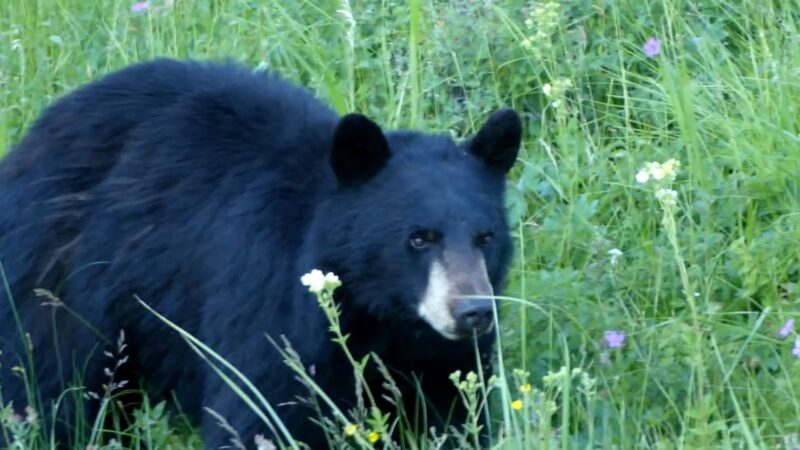
American Black Bears, who primarily inhabit the taiga or boreal forests, are recognized for their exceptional climbing abilities. From a young age, these bears take to the trees for protection.
As they grow, their reasons for climbing expand to include foraging for sustenance. Their physical attributes, such as their compact, curved claws, aid their adeptness in climbing, allowing them a secure grip on the tree bark.
- Safety: Young cubs often scamper up trees to evade predators, using their climbing skills as a defense mechanism.
- Foraging: Adult black bears frequently ascend trees in search of food, including berries, nuts, and insects.
- Resting: Trees also serve as resting spots for them, offering a safe and elevated place to nap.
Asiatic Black Bear
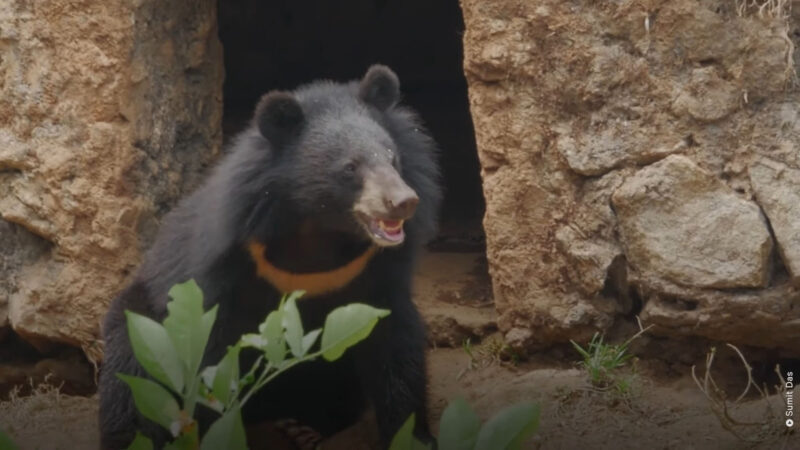
Asiatic Black Bears are skilled climbers. They inhabit the rugged terrains of Asia, where trees serve as a source of food and refuge. Their diet mirrors that of their American relative, with a variety of fruits, nuts, insects, and small mammals on the menu.
- Foraging: They often climb trees to access food, using their sharp claws and strong limbs to reach high branches.
- Resting: Trees also provide a safe resting place, away from potential threats on the ground.
- Habitat: The forested, mountainous regions they inhabit necessitate their climbing abilities for survival.
Brown Bear
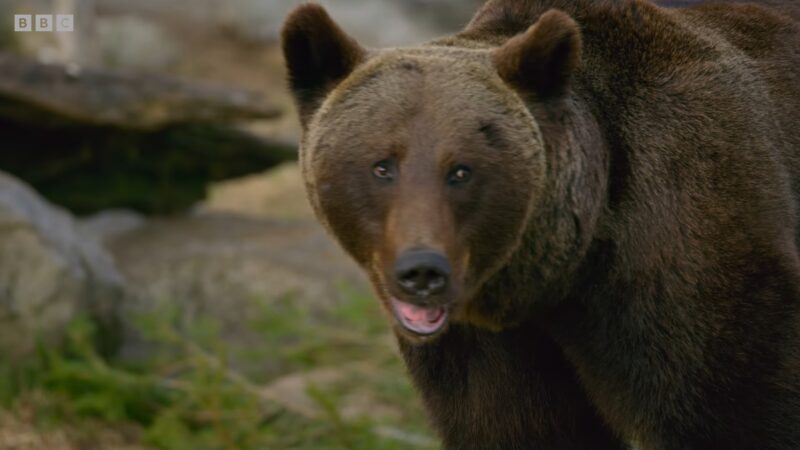
Brown Bears, including the North American sub-species of Grizzlies, are less proficient climbers. Their long, straight claws, ideal for digging, are not designed for gripping tree bark.
While young grizzlies can climb trees, adults seldom do due to their substantial size and weight.
- Cubs: Young grizzlies may climb trees to escape threats, but this behavior diminishes as they grow.
- Adults: Adults are typically ground-dwellers, using their strength and speed to hunt and forage.
- Habitat: The open landscapes they inhabit, such as tundra and meadows, do not require adept climbing skills.
More Species and Their Climbing Abilities
The bear family, also known as Ursidae, is quite diverse and includes some exotic members like the Giant Panda, Sloth Bear, and Sun Bear. These species, despite their differences in size, diet, and habitat, share a common trait – they are all capable of climbing trees.
Giant Panda
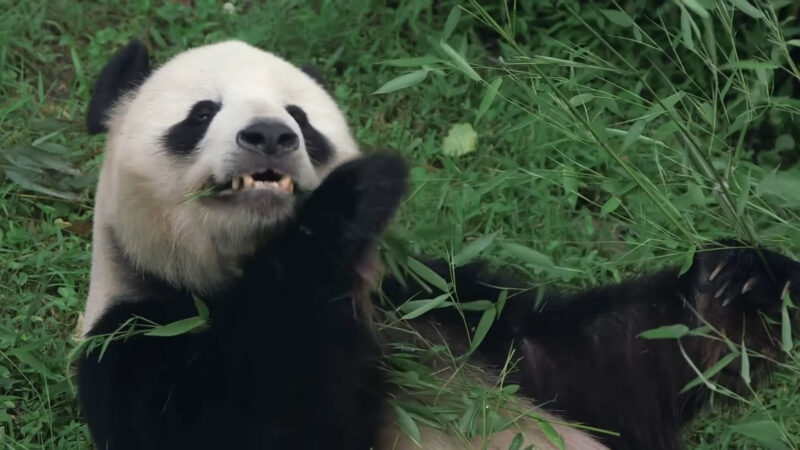
Giant Pandas, despite their size, are surprisingly good climbers. They often ascend trees to evade predators or to rest. Their robust forelimbs, equipped with strong muscles and sharp claws, make them excellent climbers.
- Escape: Pandas often retreat to the safety of trees when threatened by predators.
- Resting: Trees provide a comfortable resting place for them, away from the hustle and bustle of the ground.
- Habitat: The bamboo forests these bears inhabit are dense with trees, making climbing a necessary skill for survival.
Sloth Bear
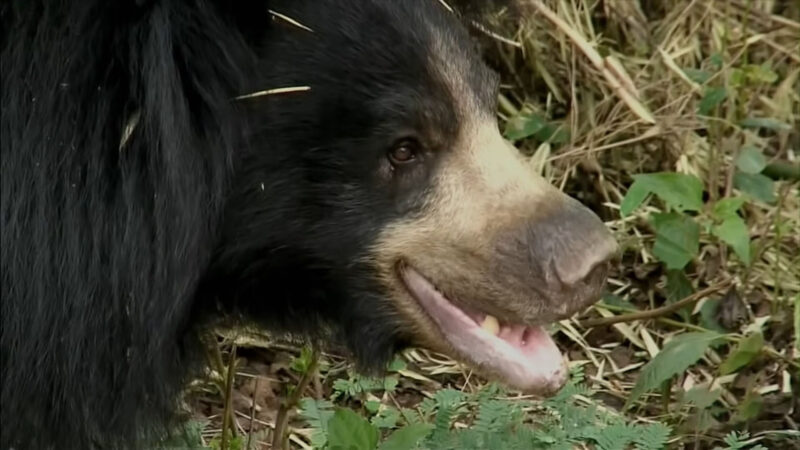
Sloth Bears, native to the Indian subcontinent, are also proficient climbers. They frequently climb trees to access honeycombs, a favorite part of their diet.
- Foraging: They are known for their love of honey and will often climb trees to raid honeycombs.
- Escape: This species also use trees as a safe haven from predators.
- Habitat: The forested areas they inhabit are rich in trees, making climbing a vital survival skill.
Sun Bear
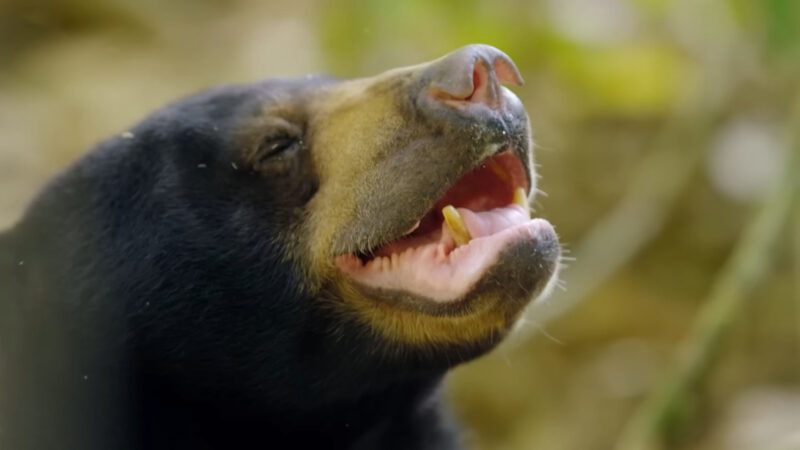
Sun Bears, which are the smallest members of the Ursidae family and are at risk of extinction, possess excellent climbing abilities. They reside in Southeast Asia’s tropical rainforests, where they frequently occupy trees for extended periods.
- Foraging: Sun bears often climb trees to forage for fruits, insects, and bird eggs.
- Resting: They also use trees as resting and sleeping spots, taking advantage of the safety provided by the high branches.
- Habitat: The dense rainforests they inhabit necessitate their climbing skills for survival.
The Exception: Polar Bears
The Polar Bear, a member of the bear family, Ursidae, stands as an exception when it comes to the ability to climb trees. Unlike its relatives, the Polar Bear does not possess this feature, and there are several reasons behind this.
Masters of the Ice, Not the Trees

Polar bears, the largest species of the Ursidae family, are not built for climbing. They are excellent swimmers and hunters, adapted to the icy environments of the Arctic. Trees are scarce in their habitat, so climbing skills are unnecessary.
- Hunting: They are adapted for hunting seals on the ice, using their strength and speed rather than climbing skills.
- Habitat: The icy, treeless landscapes of the Arctic do not require them to climb.
- Adaptation: They are built for life on the ice, with large, paddle-like feet for swimming and walking on snow.
How Fast Can a Bear Climb a Tree?
Bears display remarkable agility when climbing, despite their large size. The rate at which they ascend trees can fluctuate based on diverse factors, which include the species, age, and health of the individual specimen.
For instance, a healthy, young American Black Bear, renowned for their climbing abilities, can scale a tree as swiftly as they can sprint on the ground. This speed can reach up to 30 miles per hour!
- Factors Influencing Speed: A bear’s climbing speed depends on its size, weight, tree type, and branch arrangement. Smaller ones climb faster, while trees with closely spaced branches are easier to climb than those with widely spaced ones.
- Escape Velocity: When faced with threats, its climbing speed can dramatically increase. This surge in speed, showcasing their agility and strength, is a survival mechanism that enables them to swiftly reach the safety of the treetops.
When Do Cubs Learn How to Climb Trees?
Bear cubs start learning to climb trees at a very young age, often within their first few months. This skill is a crucial survival tactic, providing them with a safe refuge from predators when their mother is not nearby.
- First Attempts: Cubs begin their climbing adventures when they are small enough to be carried in their mother’s mouth, typically around 2 to 3 months old. These initial attempts might be clumsy, but they are an essential part of the learning process.
- Mother’s Role: The mother bear is essential in teaching her cubs climbing. She demonstrates the process by finding the best grip and navigating branches. The cubs imitate her actions, learning as they watch.
- Practice Makes Perfect: As cubs mature, they continually hone their climbing skills, becoming more adept at ascending and navigating branches. By adulthood, they are expert climbers, well-prepared for survival in their tree-filled habitats.
Final Words
Our exploration of the question reveals the remarkable adaptability of these creatures. From adept climbers like the American Black Bear to the ground-dwelling Polar Bear, each species exhibits unique behaviors shaped by its environment.
Climbing is a crucial survival skill for some, underscoring nature’s incredible diversity. As we share our planet with these magnificent creatures, understanding their behaviors is vital.
This journey from the ground to the treetop aims to foster appreciation and respect for bears, encouraging coexistence in our shared world. Let’s carry this knowledge forward, for our world is as much theirs as it is ours.


